| DESCRIPTION | HISTORY |
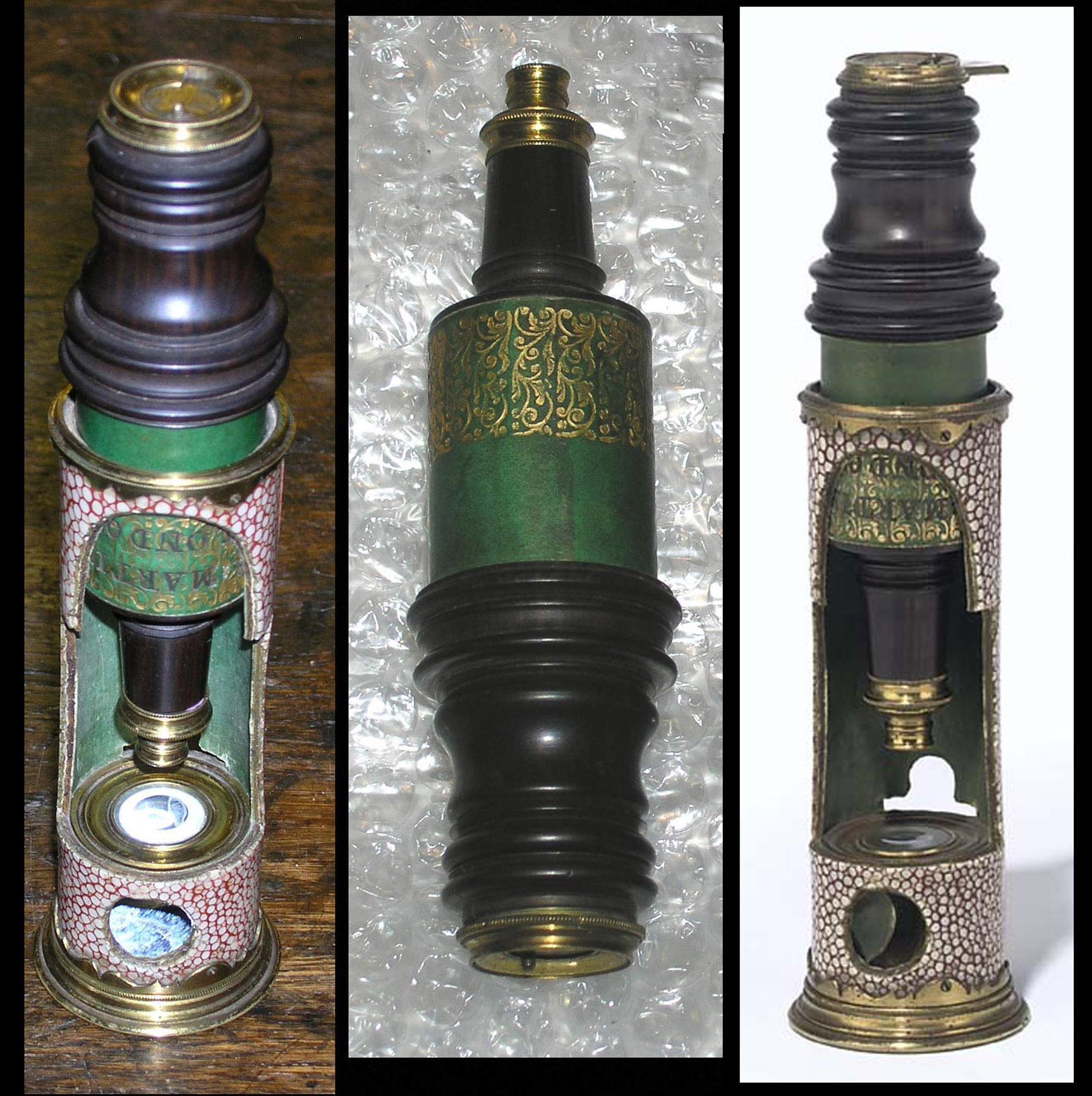
 Martin's earliest known forms were apparently handheld, not designed to rest on a table, and were to be used mainly with opaque objects. These could be had with a crude eyepiece micrometer, which registered on a dial near the eyepiece.
Martin's earliest known forms were apparently handheld, not designed to rest on a table, and were to be used mainly with opaque objects. These could be had with a crude eyepiece micrometer, which registered on a dial near the eyepiece.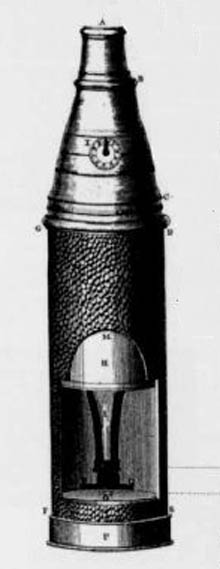 The second form we know of would stand on a table, but still was designed mainly for opaque objects. No complete example of his earliest forms survive. A single example of a partly restored version, similar to the engraving seen here, with an eyepiece micrometer is known.
The second form we know of would stand on a table, but still was designed mainly for opaque objects. No complete example of his earliest forms survive. A single example of a partly restored version, similar to the engraving seen here, with an eyepiece micrometer is known.  The slightly later versions of what we now call the 'Martin' or 'Drum' type, as shown at the top of this page, and to the left, were first made of cardboard and wood, often with ornate covering as seen on this page. In these early models, brass was used only for protecting the ends of the pasteboard tubes and as dust covers for the eyepiece.
The slightly later versions of what we now call the 'Martin' or 'Drum' type, as shown at the top of this page, and to the left, were first made of cardboard and wood, often with ornate covering as seen on this page. In these early models, brass was used only for protecting the ends of the pasteboard tubes and as dust covers for the eyepiece. As time went on, more of the microscope was constructed of brass. It was not long until the entire instrument was constructed mainly of brass. The image shown here to the left is typical of Martin's early all-brass microscopes.
As time went on, more of the microscope was constructed of brass. It was not long until the entire instrument was constructed mainly of brass. The image shown here to the left is typical of Martin's early all-brass microscopes. 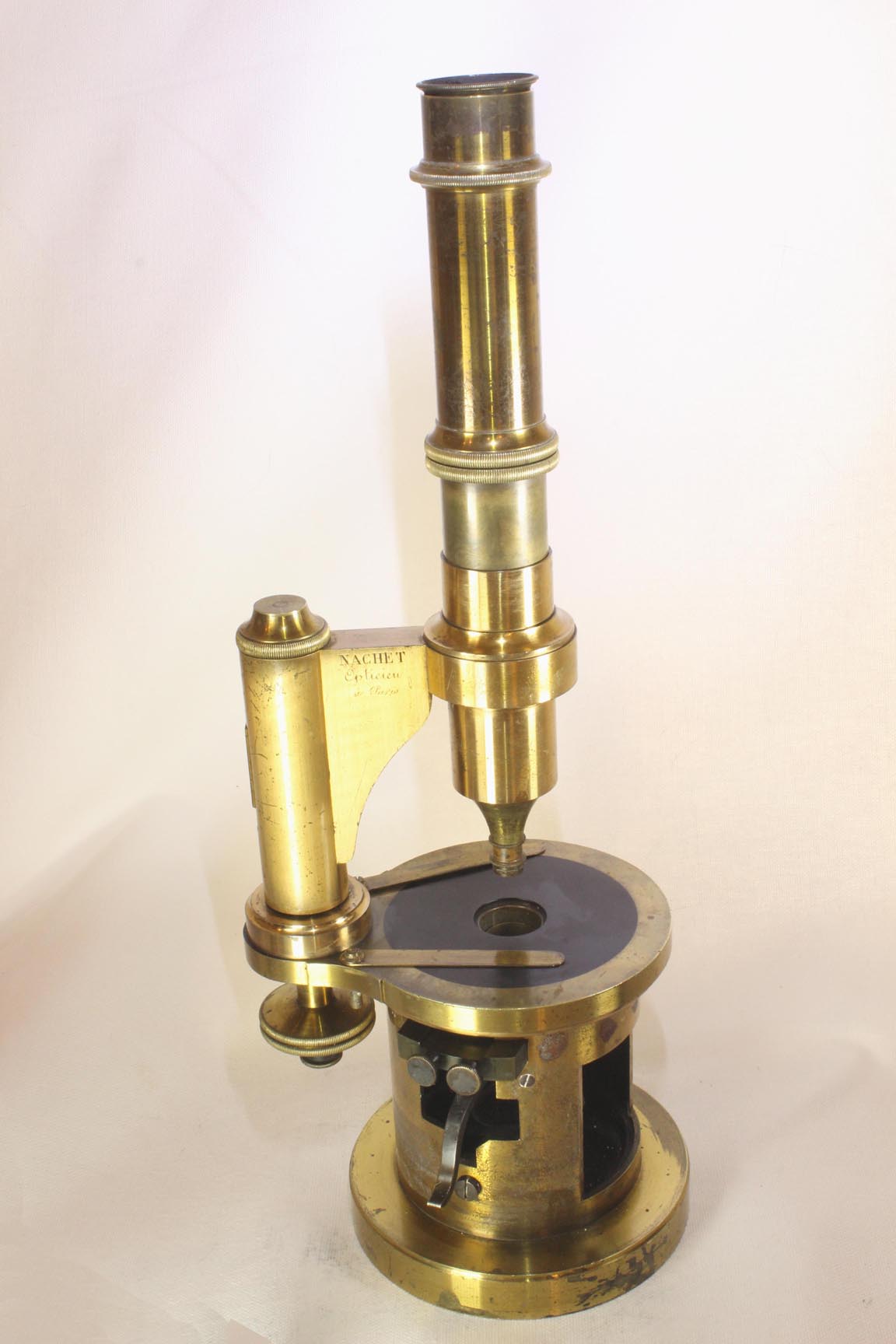
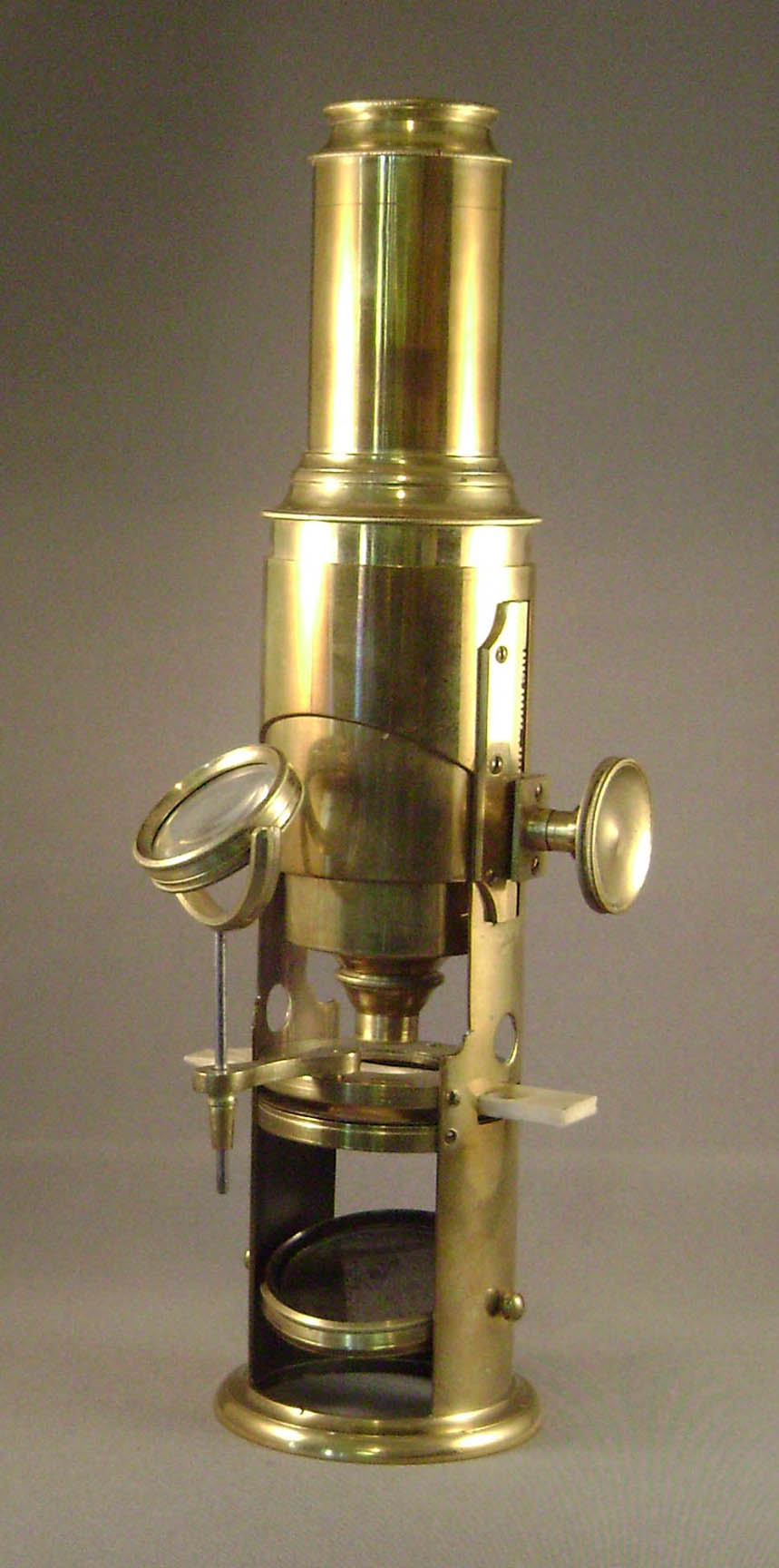 The 'Drum' design is grossly inferior to even early 19th century microscopes, but compared to others remained one of the least expensive to produce. For this reason the production of drum microscopes, initially non-achromatic, continued for many years and even into the twentieth century. The higher class examples, made by both the French and Germans, were equipped with achromatic objectives and, in some cases a more accessible stage and even a continental fine focusing arrangement, as in the French example by Nachet shown to the left. Nachet made these large drum microscopes from no later than 1854 through the 1860's. Student or 'toy' types by the French(see below) and also most by the English(right) were usually equipped with non-achromatic objectives. Note the sliding coarse focus and continental screw fine focus on the achromatic Nachet example to the left. The circa 1850 English version, on the right, had rack and pinion focusing, but non-achromatic objectives.
The 'Drum' design is grossly inferior to even early 19th century microscopes, but compared to others remained one of the least expensive to produce. For this reason the production of drum microscopes, initially non-achromatic, continued for many years and even into the twentieth century. The higher class examples, made by both the French and Germans, were equipped with achromatic objectives and, in some cases a more accessible stage and even a continental fine focusing arrangement, as in the French example by Nachet shown to the left. Nachet made these large drum microscopes from no later than 1854 through the 1860's. Student or 'toy' types by the French(see below) and also most by the English(right) were usually equipped with non-achromatic objectives. Note the sliding coarse focus and continental screw fine focus on the achromatic Nachet example to the left. The circa 1850 English version, on the right, had rack and pinion focusing, but non-achromatic objectives.
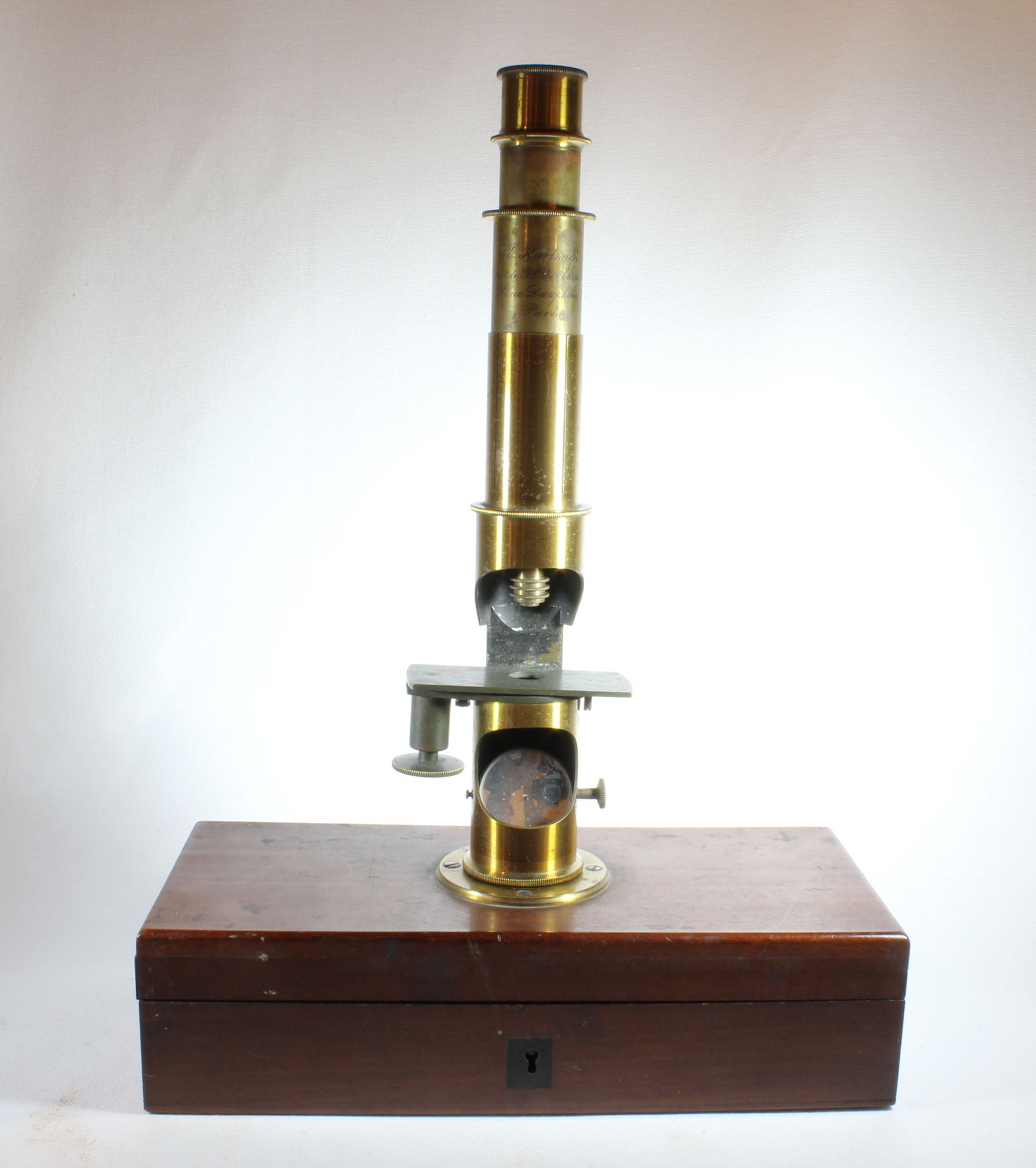 Some examples of French drum microscopes were designed to be mounted on their box, as shown here in this example by Hartnack, circa 1865. The Hartnack example shown to the left has a tilting stage type of fine focus.
Some examples of French drum microscopes were designed to be mounted on their box, as shown here in this example by Hartnack, circa 1865. The Hartnack example shown to the left has a tilting stage type of fine focus.